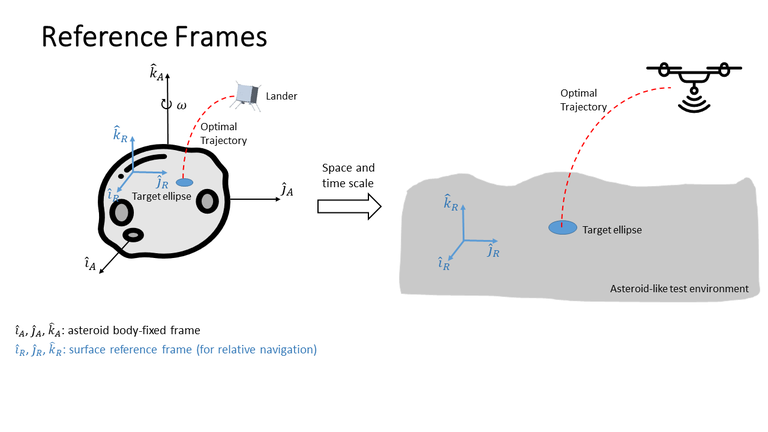Developing and Validating Autonomous Near-Field Navigation of Cooperating Spacecraft Systems for Landing on Small Celestial Bodies
Professor Dr. Roger Förstner (Space Technology) and Professor Dr. Thomas Pany (Satellite Navigation) have successfully applied for funding for the KaNaRiA-NaKoRa project from the German Space Program – Navigation.
In recent years, the focus of space research has shifted to asteroids. Besides scientific issues, this research is also increasingly interested in asteroids for the exploitation of natural resources. Very little is known about the composition of asteroids (in particular their interior composition), however, and measurements to determine it can only be taken in situ. To gain an understanding of the general composition of asteroids and the presence of possible resources, a large number of such in-situ measurements are required. Due to limited communication, however, it is extremely difficult, if not impossible, to control a spacecraft all the way from earth to its landing on an asteroid. Autonomous landings could be a solution. Autonomous navigation and landing facilitate the exploration of a number of asteroids, comets and moons, which in turn facilitates detailed exploration of the field of gravity, topography and identification of resources on these celestial bodies.
To develop and validate the autonomous landing process, a microgravity test environment is implemented in which a multicopter behaves like a spacecraft. The small body navigation development and validation environment (SBNDVE) is a central element of the project and serves to test and validate methods and algorithms for the autonomous landing of a spacecraft on a small celestial body. As part of the project, SBNDVE will be used to test autonomous landing in the volcanic caldera of Mount Teide in the Canary Islands. This area was selected as a test environment because of its similarities to the surfaces of asteroids and calderas.

Emulation of an asteroid-lander employing a multicopter drone (© svgrepo)
The main objective of the KaNaRiA-NaKoRa project is the development of a navigation unit for autonomous landing of spacecraft on small celestial bodies such as asteroids, comets and moons. The methods, algorithms and sensors required for autonomous navigation and control of the lander will be developed, validated and tested as part of the project. Testing and validation are conducted in a relevant asteroid-like environment to reach the next technology readiness level (TRL). The project also generates innovative technologies for terrestrial use, such as precise autonomous control of land vehicles, aircraft and watercraft here on earth.
Project period: June 1, 2019 – May 31, 2022
Funding by: Federal Ministry for Economic Affairs and Energy – German Space Program – Navigation